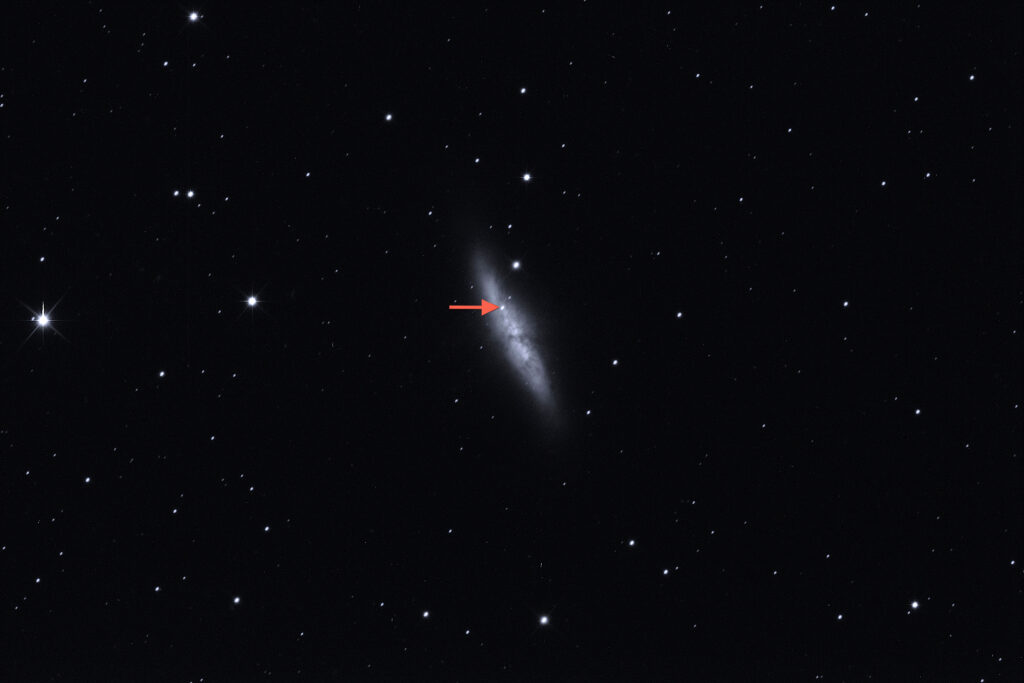Not long ago a white dwarf star 12 million light years away in galaxy M82 began siphoning off matter from a nearby companion star. In time, the white dwarf absorbed enough mass to increase its density and temperature to a critical level, triggering a runaway fusion reaction and a violent "Type Ia" supernova explosion that sent the outer layers of the star hurtling in all directions at 5-10% of the speed of light. The energy resulting from such explosions is almost unimaginable--for a short time rivaling the combined energy of 100 billion suns. The prodigious energy associated with such events, and the more common Type II supernovae, are the only known means of overcoming the powerful force of electrostatic repulsion ("like charges repel") and forming elements heavier than iron (atomic number 26) through a process called "supernova nucleosynthesis."
On January 21, 2014, a group of astronomy students at University College London noted a “new star” in galaxy M82 in the constellation Ursa Major. It was quickly determined that they were observing the cataclysmic Type Ia supernova described above.
Supernovae typically look like small, benign foreground stars in Earth-based images of galaxies (see above). But the reality is quite different. Such apparently innocuous new "stars" belie the horrific and destructive chaos they unleash.
The "light curve" of supernovae—the interval preceding and following maximum brightness--is usually one or two months, meaning that such objects are visible from Earth for a relatively short period of time. It is interesting to note that the progression in luminosity of Type Ia supernovae is so consistent that astronomers use them as "standard candles" in measuring distances in space. That is, if the intrinsic luminosity of a supernova explosion is known with reasonable certainty, then by applying the inverse square law the actual distance of the object can be computed.
The last observed supernova in our Milky Way galaxy was in 1604. Astronomers estimate that a galaxy our size should experience 3-4 per century, meaning that we are long overdue.
Supernova 2014J in the Galaxy M82
Date Taken:February 22, 2014
Location Taken:New Mexico Skies Observatory
Conditions of Location: Equipment Used:Planewave 12" CDK telescope, and FLI 6303E camera
Processing Used:single 5-minute test shot, processed in Maxim DL and Photoshop
Distance from Location:11.5 million light years
Constellation:Ursa Major
Other Link:
